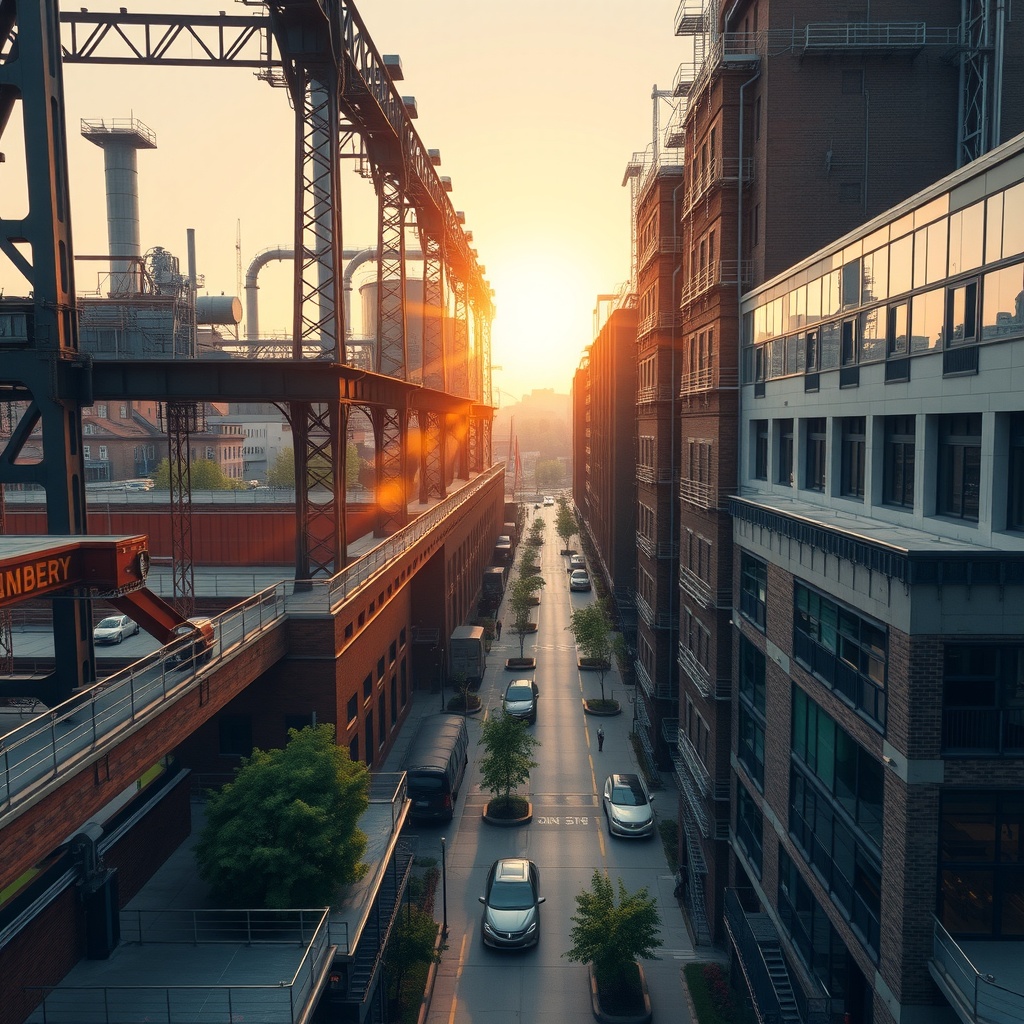
From Industrial to Residential: Converting Urban Spaces
In recent years, urban environments have witnessed a significant transformation, with former industrial spaces being repurposed into residential areas. This trend reflects a broader shift in urban planning and architecture, where the emphasis is on sustainability, preservation, and creative reimagining of the urban landscape.
As cities continue to grow, the availability of land becomes increasingly scarce. Rather than expanding outward, many urban planners and developers are looking inward to maximize existing spaces. Industrial sites, once the heart of manufacturing and production, are often situated in prime urban locations. These sites offer a unique opportunity to create vibrant residential communities without the need for new land development.
The Appeal of Industrial Spaces
Industrial spaces have a distinct aesthetic that appeals to many homeowners and designers. The raw, unfinished look of exposed brick, steel beams, and large open areas can be transformed into modern, stylish living spaces. This industrial chic style has become increasingly popular, offering a blend of historical charm and contemporary design.
Furthermore, converting industrial spaces into homes often involves maintaining the structure’s original architectural features. High ceilings, large windows, and open-plan layouts are common in industrial buildings, providing ample natural light and spacious living areas. This retention of historical features not only preserves the building's history but also enhances its aesthetic value and appeal.
Reimagining these spaces involves innovative design solutions that respect the building's original purpose while adapting it for modern-day living. Architects and designers often incorporate sustainable practices, making these conversions environmentally friendly and energy-efficient.
Challenges in Conversion
While the prospect of converting industrial spaces into residential properties is exciting, it comes with its own set of challenges. One of the primary concerns is the structural integrity of these old buildings. Many of them may require significant renovations to meet modern building codes and safety standards.
Additionally, environmental concerns such as contamination from previous industrial activities can pose significant challenges. Mitigating these issues often requires substantial investment in environmental remediation and building technology.
Moreover, designers must address practical concerns like soundproofing and insulation, as industrial buildings are often not designed for residential acoustics and climate control. These challenges necessitate innovative solutions that balance aesthetic desires with functional needs.
Case Studies: Successful Conversions
Navigating the complexities of converting industrial spaces into residential areas can be rewarding, as demonstrated by several successful case studies.
For instance, former factories and warehouses have been expertly transformed into chic lofts and luxury apartments. These projects maintain their urban industrial heritage while incorporating cutting-edge design elements.
An example is the successful conversion of the Biscuit Company Lofts in Los Angeles, a former bakery that now hosts upscale residential units, boasting large windows and open spaces while incorporating modern amenities.
Economic and Social Impacts
The conversion of industrial spaces to residential use has significant economic and social impacts. Economically, these projects can drive urban renewal and increase property values, attracting new businesses and residents to the area.
Socially, these conversions often foster community development and revitalization. They can transform previously underutilized areas into vibrant neighborhoods with a mix of housing options and recreational facilities.
With thoughtful planning and execution, these projects can enhance the quality of urban living and create sustainable, thriving communities.
The Future of Urban Conversions
Looking ahead, the trend of converting industrial spaces into residential areas is likely to continue as cities evolve to meet the demands of their growing populations.
This approach not only addresses space constraints but also celebrates and preserves architectural history. By reimagining industrial sites as residential spaces, cities can offer diverse housing solutions that cater to various needs and preferences.
Ultimately, the shift from industrial to residential represents a broader movement toward sustainable urban development, one that respects the past while building a more inclusive and sustainable future.
Conclusion
The conversion of urban industrial spaces into residential communities offers exciting opportunities for innovation, sustainability, and preservation. This trend reflects a growing desire to creatively utilize existing spaces rather than expanding into new areas.
While challenges exist, such as structural issues and environmental concerns, the potential benefits in terms of community development and urban renewal are significant.
By embracing this approach, cities can rejuvenate old spaces, respecting their historical roots while meeting contemporary needs and preferences. This transformation holds promise for more sustainable and inclusive urban futures.